I Tried It: A Gym Session Inspired By the Ido Portal Method
At Body of Work in South Boston.
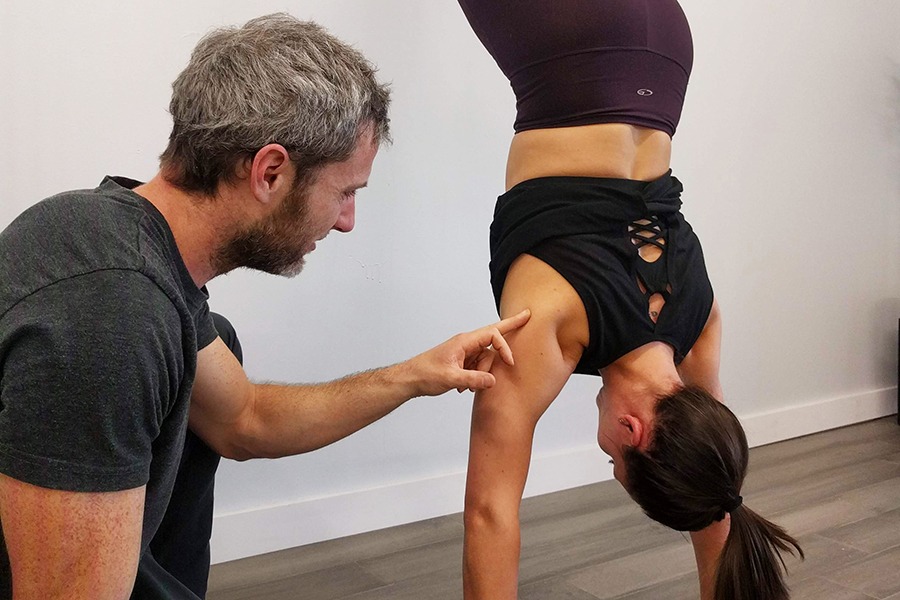
Working on the pike before the handstand/ Photo by Iona Holloway
Typically, my gym experience involves a heavy loaded barbell, a tight belt cinched around my mid-section, and loud grunting and yelling to get “Just one more rep!” But while I love strength training in all its glory, I’m never against shaking things up. At the end of the day, I think it makes me a better, more well-rounded athlete. So when I heard about the new gym in South Boston called Body of Work inspired by Ido Portal’s methods and movement culture, I knew I needed to try it out.
Movement culture, as described by Ido Portal, is the shift away from the traditional labeling of exercise into categories and draws upon all ways of moving to create a movement practice that is suitable for your needs and goals. Meaning, one person’s movement practice could look completely different from someone else’s. Common exercises utilized in a practice like this include yoga poses, mobility exercises, hanging, handstands, gymnastics stretching, and really…anything your mind can come up with.
The gym is located in an old brick building that was once a rum warehouse on 2nd Street, and shares space with the Distillery Gallery, which showcases different forms of art from all over Boston and beyond. If Iona Holloway, a movement coach at Body of Work, hadn’t found me wandering on the side of the street looking for the door, I’m sure I would have been twenty minutes late to my session. She led me to a doorway reading “Radiant Yoga,” through hallways decorated with intriguing paintings, sculptures, and photoshoot spaces. After weaving our way up to the sixth floor, I walked into a studio graced by natural light pouring through the windows and minimal gym equipment, with stall bars, rings, and balance implements that lined the perimeter of the room.
Don’t expect treadmills, machines, or barbells, though. Your body is the machine for these workouts. Holloway says that’s one of the biggest things they try to stress at Body Of Work—this is a new style of training and what can seem intimidating is actually very approachable when you break it down into pieces.
“It’s about checking your ego at the door,” she says. “And enjoying the process of learning new skills and building upon those skills until you achieve what you set out to achieve. It’s a lot of skill acquisition and less blowing your brains out in a bootcamp.”
So when Sean Germain, owner of Body of Work, asked me what I wanted to focus on for the hour-long session, I hesitated, but knew it had to be handstands. Movement culture aims to strengthen a person’s ability to move properly in any space and give them the body awareness and tools to accomplish specific skills, like the handstand. I’ve always admired the beautifully straight and effortless handstands its devotees can manage, but have never truly understood how to hold my own body upside down in space. This was a perfect opportunity.
With that skill in mind, Germain broke down the handstand into its most simple forms and we began prepping my shoulders and wrists, with hand balances on all fours, rocking into the fingers, and practicing shoulder protraction and retraction drills, which involve reaching the hands in front and upwards as far as possible and then retracting the shoulders back by squeezing the shoulder blades together. We then moved into prepping the hip joints and holding the proper body line position with one-legged balance exercises and hollow body holds.
At this point, Germain said I was ready to get into the crow yoga position, which is when you balance on your hands with your knees resting on your elbows. It’s basically a pre-handstand. Turns out, I can hold crow pose for a good five seconds, and I felt pretty comfortable in the position. Next, he showed me how to walk my bare feet up the white wall behind me, telling me to push into the ground, squeeze my backside and legs together, look down in between my hands and as every muscle in the middle of my back burned, I lifted my feet off the wall and held the handstand.
Mission accomplished.
Sessions at Body of Work are difficult to categorize, considering how many different elements are part of it. You can’t compare it to yoga because it’s not, it has some ties to gymnastics, but that’s not what it is, and you can’t compare it to any type of strength training or body weight circuit because it’s not that either. The sessions build on complexity, as opposed to chasing numbers in the weight room, or distance on a track, Germain says. “Nothing is wrong with those things, but it’s cool to see what your own body is capable of as you push it to develop harder and more complicated things.”
As I made my way back down to the ground floor, weaving through the art work of the gallery once more, I couldn’t help but feel like I had just created art myself, with my body—and maybe that’s the whole point. Our bodies are capable of beautiful and intricate modalities of movement and the only way to find out if we’re capable of them is to try.
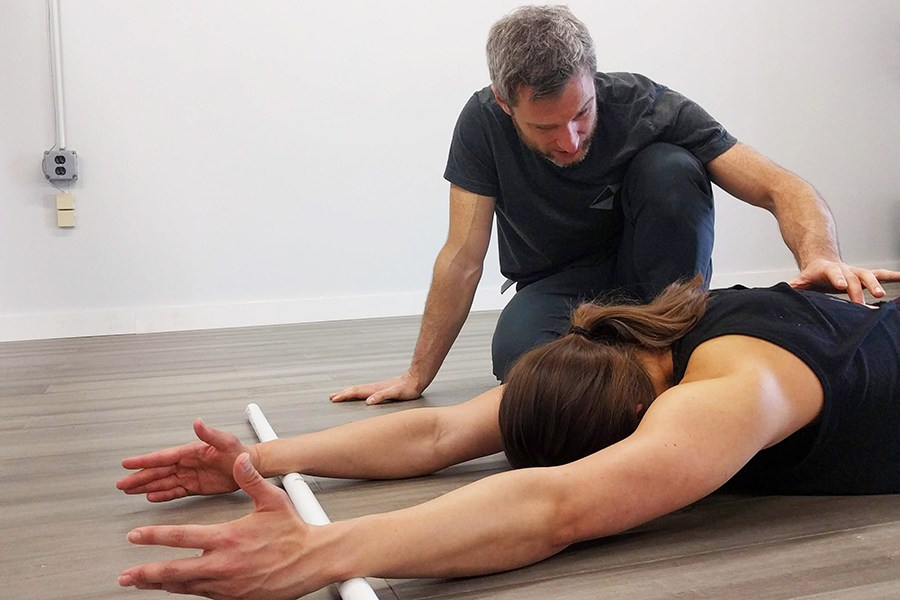
Body line positioning on the floor/ Photo by Iona Holloway
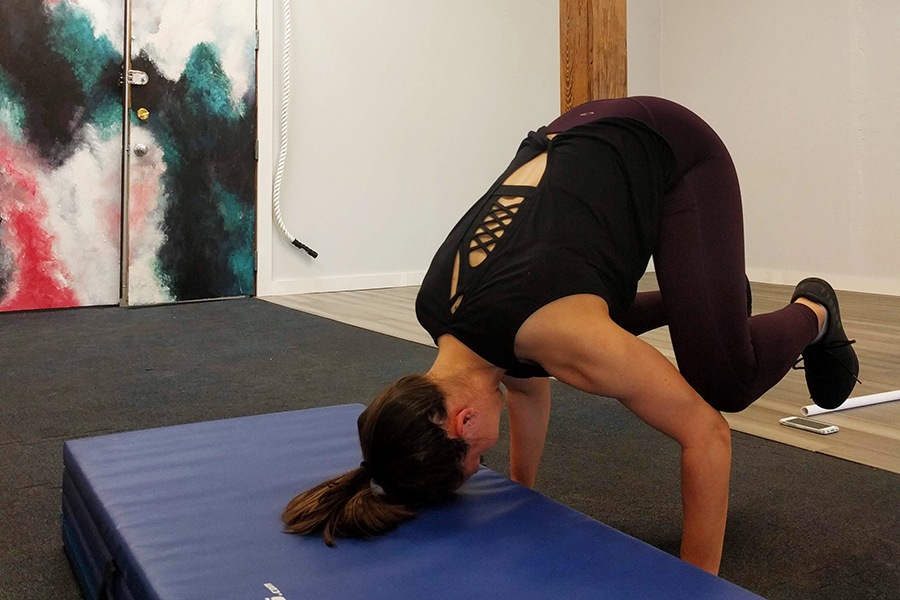
Crow pose/ Photo by Iona Holloway
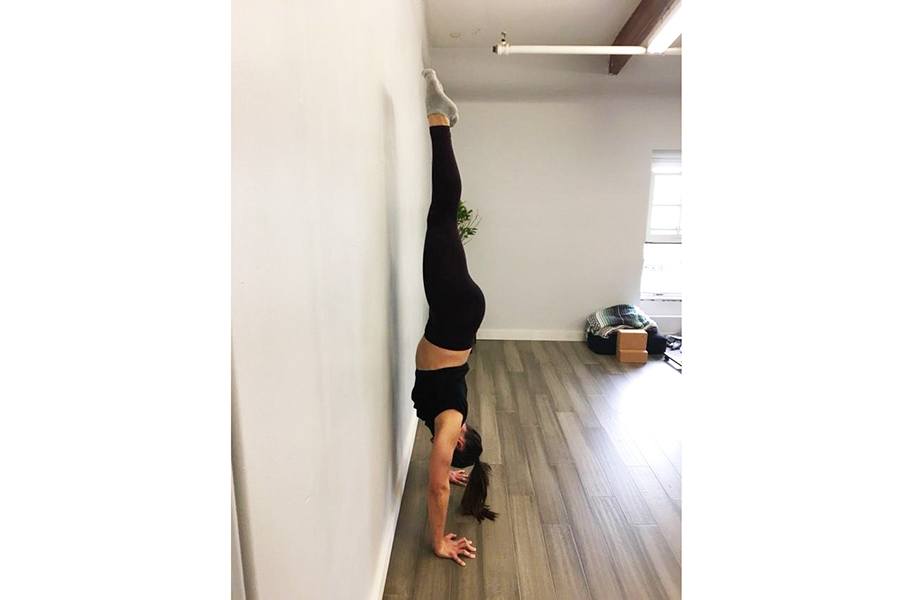
Handstand off the wall/ Photo by Sean Germain
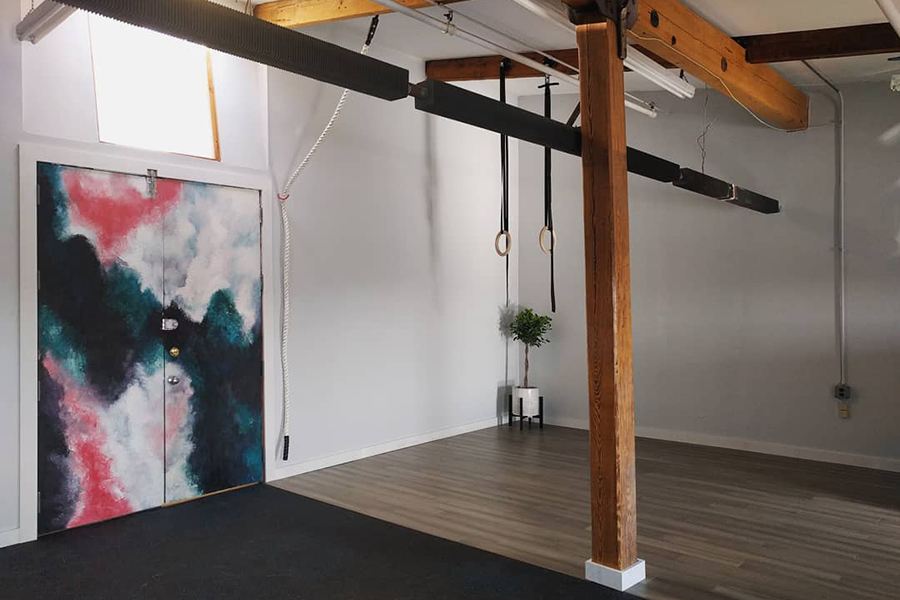
Image provided.

Photo by Iona Holloway.


